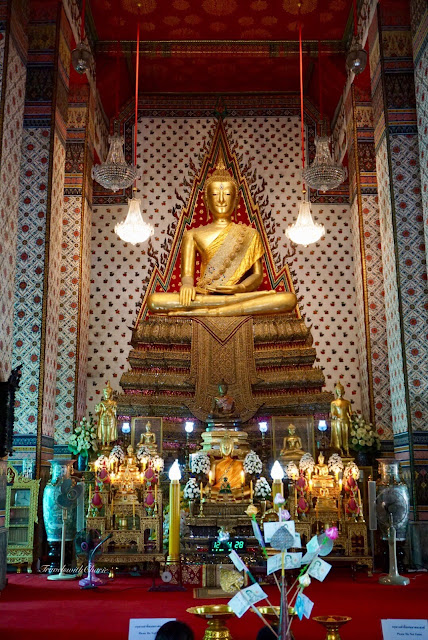Wat Arun or the Temple of Dawn rises above the west bank of the Chao Phraya River. Its spires are symbolic of Mount Meru (center of the world in Buddhist cosmology) and are richly trimmed with ceramic tiles and fragments of Chinese porcelain.
The Khmer style central prang or spire is about 79 meters high (259 ft).
There are four smaller towers surrounding the central spire, an architectural feature that pays homage to Mount Neru. Notice the ornamented figures of Chinese soldiers that seem to support the tower.
How to get there:
Take the river express ferry to Tha Tien near the Grand Palace and Wat Pho then transfer to a shuttle boat that crosses the river or take one of the more pricey tourist boats that stops at Wat Arun. Entry fee to Wat Arun is 50 baht.
*****
Images by TravelswithCharie
The Khmer style central prang or spire is about 79 meters high (259 ft).
There are four smaller towers surrounding the central spire, an architectural feature that pays homage to Mount Neru. Notice the ornamented figures of Chinese soldiers that seem to support the tower.
These prangs glitter in the light from the ornamentation that define the temple complex.
A gilded door leads to one of the halls in the temple complex.
The Niramitr Buddha sits calmly in the ordination hall
Take the river express ferry to Tha Tien near the Grand Palace and Wat Pho then transfer to a shuttle boat that crosses the river or take one of the more pricey tourist boats that stops at Wat Arun. Entry fee to Wat Arun is 50 baht.
*****
Images by TravelswithCharie




